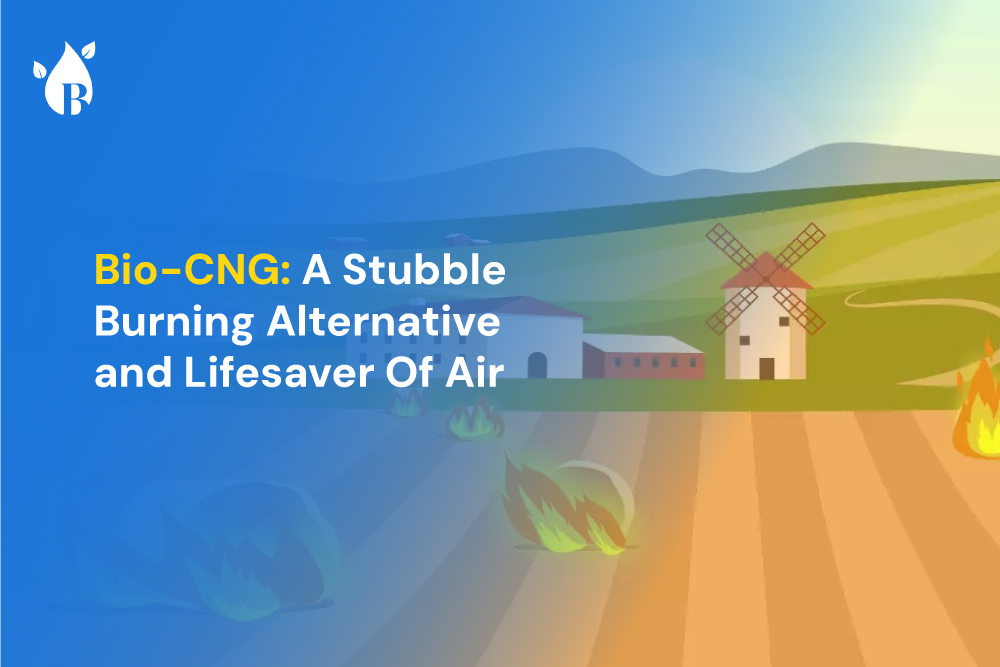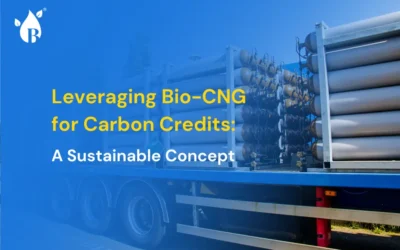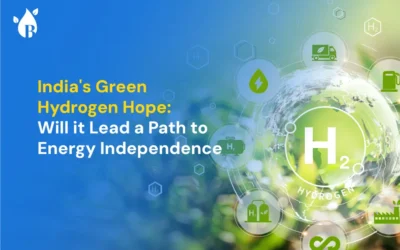
Unveil the lifeline for our air. Bio-CNG emerges as a transformative alternative to stubble burning. It not only curbs air pollution but also breathes life into sustainable practices. Say no to stubble burning and yes to cleaner air with Bio-CNG!
Understanding Stubble Burning
Each paddy harvest leaves behind a significant by-product – straw stubble. While some farmers use a portion of this stubble as cattle feed, a substantial amount is unfortunately discarded as waste. In regions like Punjab and Haryana, despite being prohibited by the Punjab Pollution Control Board (PPCB), farmers often resort to stubble burning as a cost-effective method to clear fields for the next crop, particularly at the start of winter. According to CIMMTY estimates, a staggering 23 million tonnes of stubble are burned annually across northern India.
The Trouble With Stubble Burning
The act of burning stubble not only presents an immediate environmental concern but also has far-reaching consequences, particularly in terms of air quality. The smoke produced during stubble burning becomes a significant contributor to air pollution, releasing particulate matter and harmful pollutants into the atmosphere. The low wind speeds characteristic of winter exacerbate the issue, allowing the smoke to travel considerable distances, reaching places up to 250 kilometers away.
Nowhere is this impact more evident than in the Delhi-NCR region, already grappling with alarming pollution levels. Shockingly, 15% of the pollution in this area, classified as one of the most polluted regions globally, can be directly attributed to the burning of stubble in the neighboring states of Punjab and Haryana. This not only underscores the interconnectedness of environmental challenges but also emphasizes the urgent need for sustainable and eco-friendly agricultural practices to mitigate the detrimental effects on air quality and public health.
One ton of stubble burning releases – 2 kg of SO2, 3 kg of particulate matter, 60 kg of CO, 1460 kg of CO2 and 199 kg of ash.
Stubble burning reached an alarming peak, accounting for a staggering 42% of pollution on a Thursday in November this year, significantly adding to the ominous ‘Toxic Cloud’ hanging over Delhi. The severity of this air pollution crisis demands urgent attention, underscoring the critical need to treat the ban on stubble burning seriously and earnestly seek alternative solutions to address this pressing environmental issue.
“One ton of stubble produces 110 kg bio-CNG which makes 3000 meals”
The Alternative Solution to Stubble Burning
The answer is Yes. However, despite the implementation of bans, fines, and the introduction of initiatives such as the government’s Happy Seeder machine and the Indian Agricultural Research Institute’s bio-decomposer, farmers persist in resorting to the age-old practice of setting agricultural fires to manage stubble. The challenge lies in the complex socio-economic factors influencing these decisions. However, amid this persisting issue, a promising solution emerges on the horizon—utilizing stubble for the production of Bio-CNG (Compressed Natural Gas).
This innovative approach not only addresses the problem of stubble disposal but also offers an environmentally friendly and economically viable alternative. Bio-CNG production involves the conversion of agricultural residue, including stubble, into a clean and renewable energy source. By tapping into this resource, we not only mitigate the adverse effects of stubble burning on air quality and public health but also contribute to sustainable energy practices.
What Is Bio-CNG?
Bio-CNG, also known as Bio Compressed Natural Gas, emerges as a sustainable fuel alternative designed to usher in a cleaner era for both automotive and household applications. Crafted primarily from paddy straw, this eco-friendly fuel offers a transformative solution for reducing environmental impact. In the automotive sector, Bio-CNG serves as a green substitute, curbing emissions and promoting sustainable mobility. Simultaneously, as a household cooking gas alternative, it extends its eco-conscious benefits to everyday living.
Related Read: Factors to Consider When Setting up a Bio-CNG Plant?
Why Turn to Bio-CNG?
The surge in Bio-CNG’s popularity is attributed to its non-toxic nature, setting it apart from conventional fuels. However, the advantages of Bio-CNG extend far beyond. Not only does it repurpose waste stubble into a valuable energy source, but it also avoids land contamination associated with other fuels. Furthermore, Bio-CNG aligns with the true purpose of clean air, promoting respiratory health instead of exacerbating conditions like asthma.
One ton of stubble produces 110 kg bio-CNG which makes 3000 meals
Beyond its environmental merits, Bio-CNG plants become catalysts for economic growth, creating numerous employment opportunities for local communities. Farmers, in particular, benefit by generating an additional income stream through the sale of straw stubble to industries. Moreover, the byproduct of Bio-CNG production includes tons of organic fertilizer, contributing to sustainable agriculture practices.
In essence, Bio-CNG emerges as a comprehensive solution, effectively managing waste, safeguarding the environment, boosting employment, and reducing health risks. So, the question that naturally arises is, ‘Why not turn to bio-CNG?’ Reflect on the possibilities! It’s not just about contemplation; it’s about actively participating in creating an impact.
To embark on the journey of bio-CNG and other biofuels, we’ve got the perfect starting point for you – Buyofuel, your trusted green fuels digital marketplace that connects you with leading Bio CNG manufacturers in India. Here, you can seamlessly negotiate, buy, and sell biofuels, transforming into our empowered eco-warrior.



